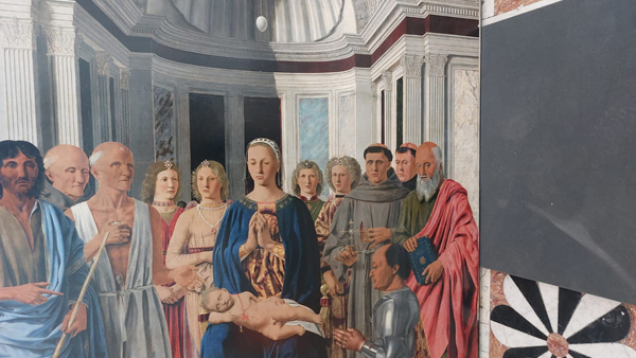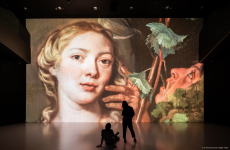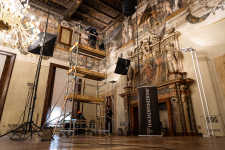Federico da Montefeltro (1422 – 1482) was a prince, warlord and humanist who made Urbino the cradle and the center of the Renaissance.
The cities of Urbino and Gubbio are leading the National Celebration Committee with is putting on a rich slate of events in 2022, which marks 600 years since the birth of the Duke.
One item stands out among all the others: the installation of a replica of the Montefeltro Altarpiece of Piero della Francesca in the Church of San Bernardino. The church, which has been restored for the occasion, is where the remains of Federico and his son Guidobaldo are buried.
In 1811, Napoleon’s troops stole the Madonna and Child with Saints, Angels and Federico da Montefeltro, also known as the San Bernardino Altarpiece or the Montefeltro Altarpiece or the Brera Madonna. At the time, Piero della Francesca was not as highly considered as today, as his style did not match the Emperor’s taste in art. Instead of being sent to France, the work ended up in the collection of the Pinacoteca di Brera in Milan.
The Altarpiece’s installation in the mausoleum is an important part of the initiatives to bring recognition to the territories of the Duke of Urbino, who is seen here in this iconic image. This replica of the work perfectly reproduces its colors, surface texture shapes and brush strokes.
“The technology allows us to make faithful reprodutions of works of art and to be able to put them back in their original location, provides many other ways to valorize and promote the artistic heritage,” says Luca Ponzio, the CEO of Haltadefinizione. “Piero della Francesca is so closely tied to the court of Urbino and the reinstallation of his monumental Montefeltro Altarpiece is a great example of how a replica can fill a void and return a work that had been taken away, to its original land and community.”
Digitization in the ultra-high definition Gigapixel format makes it possible to produce reproductions of paintings of very high image quality. The technology produces very detailed images made of billions of pixels. This allows us to study the work and to reproduce it, down to its finest details.
With this most up-to-date photographic technology, it is possible to make a replica of a painting and place the copy in the location where it was first commissioned, conceived or imagined. This is an extraordinary opportunity that only a replica can offer, with the unique ability to bring value to the work in ways that would otherwise not be possible to imagine.



